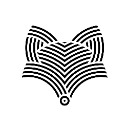Activity
Mon
Wed
Fri
Sun
Nov
Dec
Jan
Feb
Mar
Apr
May
Jun
Jul
Aug
Sep
What is this?
Less
More
Memberships
Painters Hub
Private • 2.5k • Free
The Drawing Guild
Private • 1.4k • Free
Fox and Line
Public • 6 • Free
6 contributions to Fox and Line
The Drakensberg
The Drakensberg, also known as the Dragon Mountains, is a stunning mountain range located in South Africa, stretching for over 1,000 kilometres along the eastern border of the country. The range is renowned for its dramatic peaks, plunging valleys, and breathtaking scenery. In this article, we will explore the rich history of the Drakensberg and how it has shaped the region into what it is today. Early History The Drakensberg region has been inhabited by humans for thousands of years. The San people, also known as Bushmen, were the first to make their home in the area, living in small groups and hunting for food in the mountains and valleys. They left behind a legacy of rock art that can still be seen in the region today, depicting their daily lives, hunting scenes, and spiritual beliefs. The Zulu Kingdom In the early 19th century, the Zulu kingdom, led by King Shaka, began to expand its territory into the Drakensberg region. The Zulu people were a powerful and warlike tribe, and their conquest of the region was marked by fierce battles and bloodshed. Despite the Zulu conquest, the Drakensberg remained a relatively isolated and undeveloped region for many years. It was not until the mid-19th century, with the arrival of European settlers, that the area began to be explored and developed. European Exploration In the 1830s, European settlers began to explore the Drakensberg region, seeking new land and opportunities. The first European to reach the summit of the highest peak in the range, Mount Aux Sources, was a Scottish missionary named Andrew Geddes Bain. His ascent of the mountain in 1836 opened up the region to further exploration and development. The arrival of European settlers brought significant changes to the Drakensberg region. The settlers established farms and ranches in the valleys, and mining operations were established in the foothills. The development of roads and infrastructure made the area more accessible, and tourism began to grow. Conservation and Preservation
2
0

Africa
So I love to sit for hours, building out an image with thousands of lines flowing in and out of one another. It always starts off quite abstractly, and eventually something forms. I'm South African, so I forged ahead with the continent of Africa in mind, but my heart will always be proudly and firmly cemented in the South 🇿🇦
3
5
New comment 6h ago

Table Mountain
Table Mountain is one of the most recognizable natural landmarks in the world, located in Cape Town, South Africa. The mountain has a rich history that spans millions of years, and it continues to be an important site for both tourists and locals alike. In this article, we'll explore the fascinating history of Table Mountain, from its geological formation to its role in South African culture and society. Geological Formation Table Mountain is a flat-topped mountain that rises 1,086 meters above sea level. The mountain is made up of sandstone, which was formed over 280 million years ago during the Permian period. During this time, the Cape region of South Africa was covered by a shallow sea, and over time, layers of sand and sediment were deposited on the ocean floor. Over millions of years, the sand, and sediment were compressed and hardened into the sandstone that makes up Table Mountain today. The mountain also contains layers of shale and granite, which were formed later during the Jurassic and Cretaceous periods. Early Human History Table Mountain has been inhabited by humans for over 15,000 years. The earliest inhabitants were the San people, who were hunter-gatherers that lived in the Cape region of South Africa. The San people believed that Table Mountain was a sacred place, and they used it as a place of worship and as a source of food and water. Later, the Khoi people, who were pastoralists, also inhabited the Cape region. They used Table Mountain as a grazing area for their livestock, and they also harvested the wild plants and animals that lived on the mountain. European Exploration and Colonization In 1488, Portuguese explorer Bartolomeu Dias became the first European to sail around the southern tip of Africa, known as the Cape of Good Hope. Over the next few centuries, European explorers and traders established a presence in the Cape region, and in 1652, the Dutch East India Company established a permanent settlement in what is now Cape Town. During the Dutch colonial period, Table Mountain was used as a navigational aid for ships entering and leaving the Cape Town harbour. The mountain was also used as a source of timber and firewood for the growing settlement.
2
5
New comment 6h ago

The Promise
140*90cm My latest abstract - celebrating the certainty of seasons passing!
3
2
New comment 7h ago

A quick question to admin
Hi, I'm Graham from Johannesburg, and I'm new to this group. I have been sketching and painting for many years. Thank you for having me, and I'm looking forward to seeing all the amazing art. Before I post anything, just a quick question to admin, I would like to know what I may and may not post?
2
2
New comment 8h ago
1-6 of 6
@graham-brown-2982
Graham Brown is an oil painting and pencil artist from Johannesburg SouthAfrica specializing in landscapes, seascape, figures and still life art
Active 2h ago
Joined Oct 2, 2024
Johannesburg, South Africa
powered by




